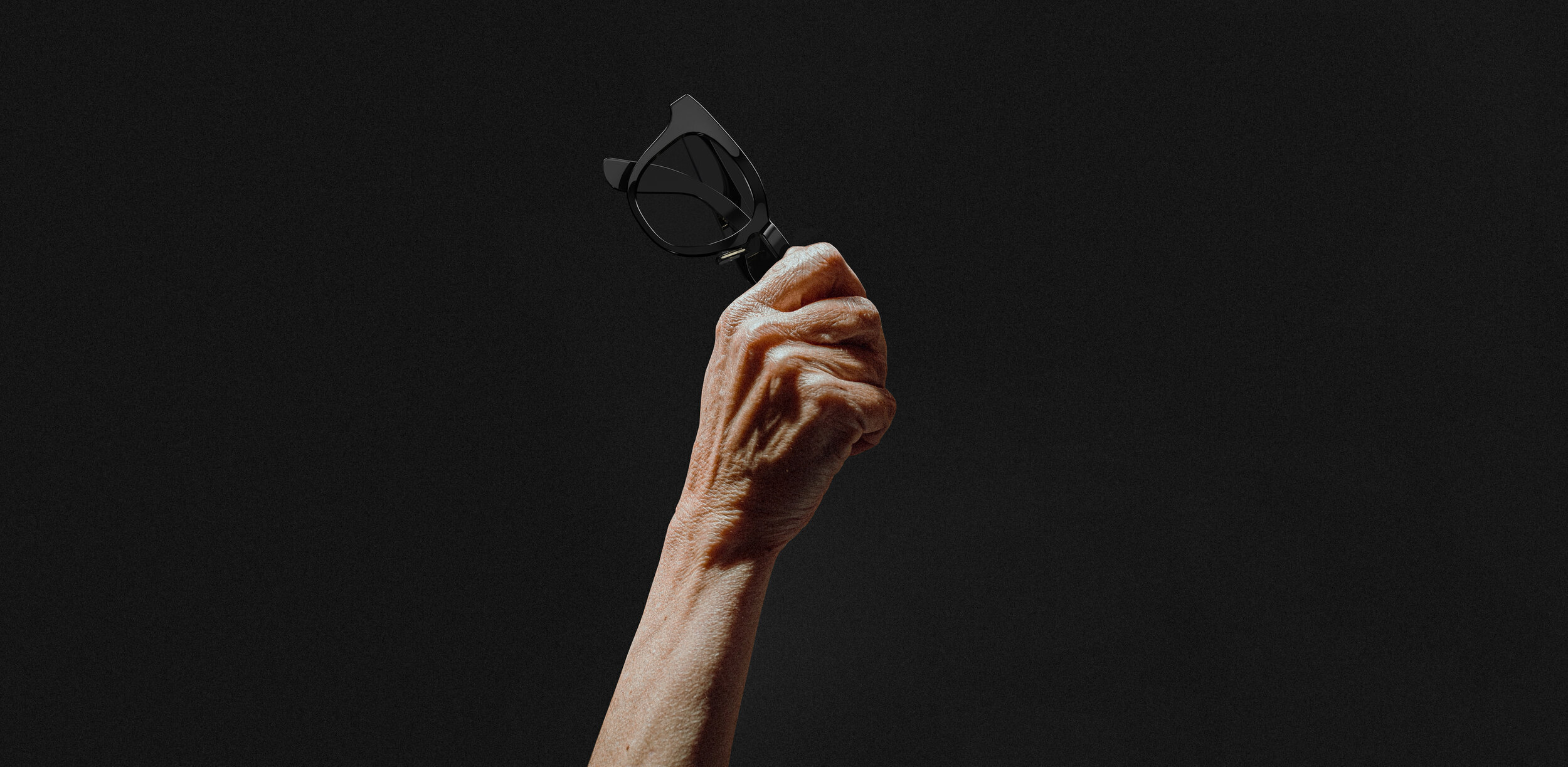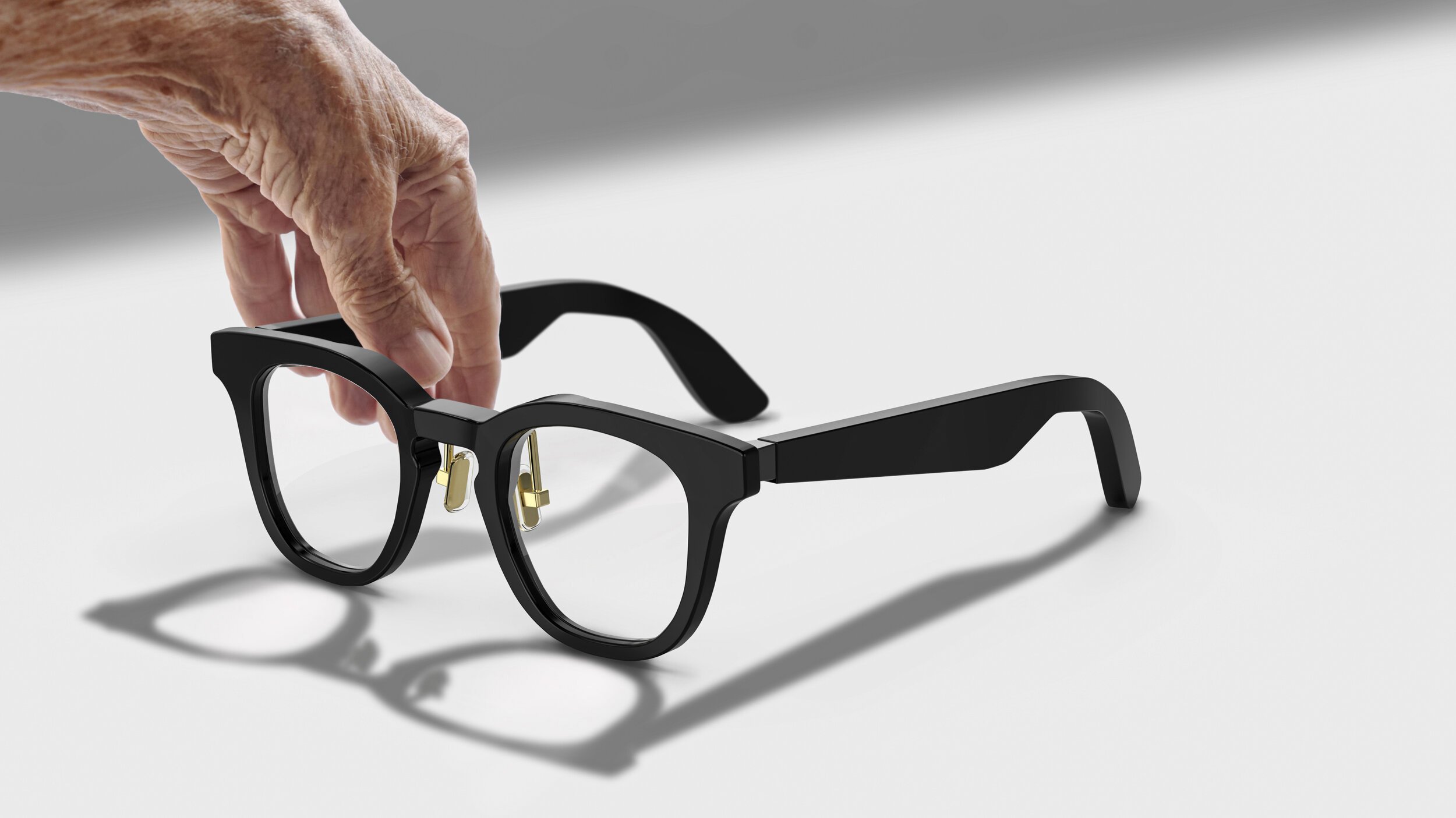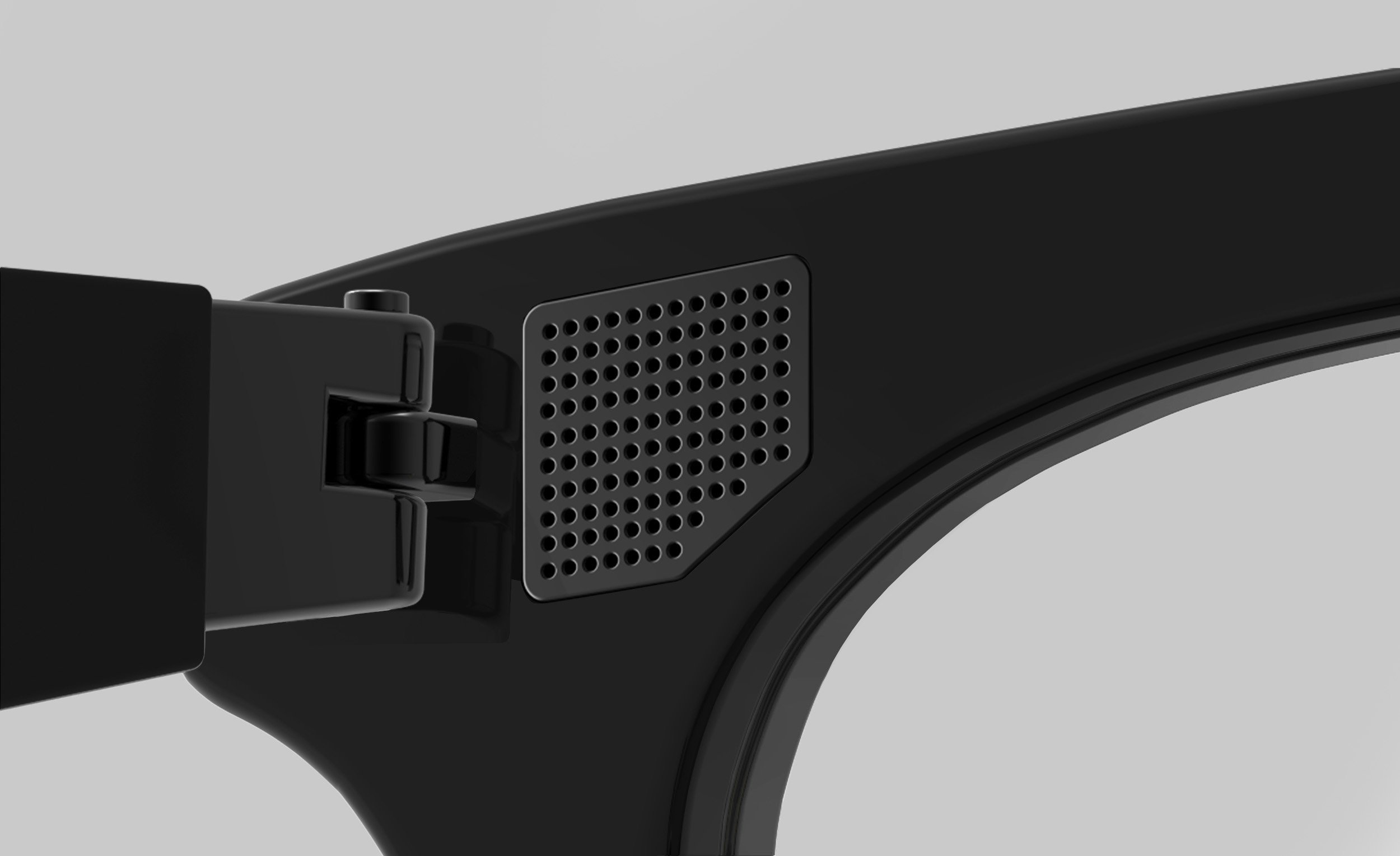
Making Voice Accessible
Redesigning A Voice Amplifier
2018
Vocifer is a voice amplifier that aims to give a better voice and tackle the stigma associated with current amplifiers used for people who have Parkinson's with soft voice conditions. It is designed as a wearable glasses for people to wear comfortably everyday and to help communicate better with their loved ones.
Problem With Existing Voice Amplifiers
Conventional voice amplifiers are not designed in consideration for people with Parkinson’s or for those whose device needs to be integrated into everyday lifestyle. The form language of the device implies a medical device, portraying user as a disabled person, which removes a person’s dignity and personality. Many will not use the product and instead choose to have difficulties in speaking. Abandonment rate is 40%
/ Aesthetics
Conventional amplifiers are bulky, and wire gets in the way, which is extremely difficult for Parkinson’s users with limited dexterity to wear. People don’t want to use current voice amplifiers because the device creates stereotype of disability to the user through recognizable form that reflects handicap.
/ Functionality
Throat microphone is commonly used for PD users. It creates unnatural sounds by making any person sound muffled and does not capture pronunciations accurately. Other voice amplifier uses regular mic which it causes feedback and sound overlaps the user’s voice with background noise.
Design Criteria
Be Inclusive
Easy To Use
Improves Voice
Portable
The Product
A Contact Microphone On Nose Pad
Built-In Voice Amplifier Speaker.
All In A Wearable Glasses
Who The Product Is For
Parkinsons
Parkinson’s is a condition in which parts of the brain become progressively damaged over years due to decreasing amount of dopamine, a chemical that sends signals and enables body to move. 10 million people have Parkinson’s with 60,000 people diagnosed per year.
Soft Voice Condition
Soft voice is one of symptoms of Parkinson’s. There are four stages to voice condition levels and it is the last 3 to 4 stage when a person needs to use voice amplifier. That is roughly 2 million people worldwide. 89% of people of Pd will develop soft voice condition over lifetime.
Experience With Soft Voice Condition
Losing a voice greatly affects a person’s lives. It becomes difficult to have a casual conversation with someone, express one’s emotion and clearly state one’s opinion, an everyday interaction that we take for granted.
Vocifer reinterprets the voice amplifier as a wearable glasses. The intersection of medical and fashion serves to break the stigma of dependance. Vocifer does not define but support user as a strong independent self.
Why Glasses?
Translating the soundbox of the nose bone conduction to the bridge on the glasses frame would be a non-invasive way to implement the technology and introduce the med-tech to users in a familiar object.
1. Current throat microphone, using bone conduction mic, makes any person sound muffled. Vocifer solves this issue by changing the mic location from the throat to the nasal bone, which picks up pronunciations more accurately.
2. Glasses is a great example that has transitioned from medical device to daily fashion accessories which will allow the voice to be projected in discreet and non stereotypical way.
3. Glasses is one of the few accessories that the users with tremors can handle well compared to other accessories which are too delicate and small to handle. Primary users are elders who mostly wear glasses daily. Solving two problems in one makes it a viable product.
How To Use
1. Wear glasses like you would wear an ordinary glasses.
2. Voice sound level can be adjusted by placing hand on the arm. Right arm for higher volume and left arm is for lower volume.
3. The person will talk as normally as she did as always.
The sensor located at the end of the leg that touches the skin will sense the body and turn on immediately. This will be helpful for Parkinson’s users with limited dexterity.
As a person speaks, voice will be picked up from the microphone placed in the nose pad.
Voice will be amplified from the speaker located on the back top end of the frame.
Technicals
Why speaker is located on the front-back frame.
Nose Bridge
Placing the mic on nasal bone picks up the user’s voice better than conventional throat microphones by capturing user’s tone and pronunciation precisely. Bone conduction mic is chosen because it only picks up the user’s voice apart from other background noise. This makes the voice clear and natural with no background sound overlaps, which is great for capturing whispers and soft voices.
Nose Pad Material Layers
Piezo (Bone Conduction Mic)
Rubber Coating (For Non Conductive Secureness)
Brass Electroplate (For Capturing Interferences)
Silicone (For Comfort)
Nose Pad Structure
For universal fit, adjustable nose pads is placed. Nose pad can be adjusted in wide range of angles to fit the person’s nose shape in order to ensure a perfect fit for the microphone to capture the wearer’s voice.
For the product to last a long time, the nose pad is replaceable in case it breaks or an improved microphone is released.
































